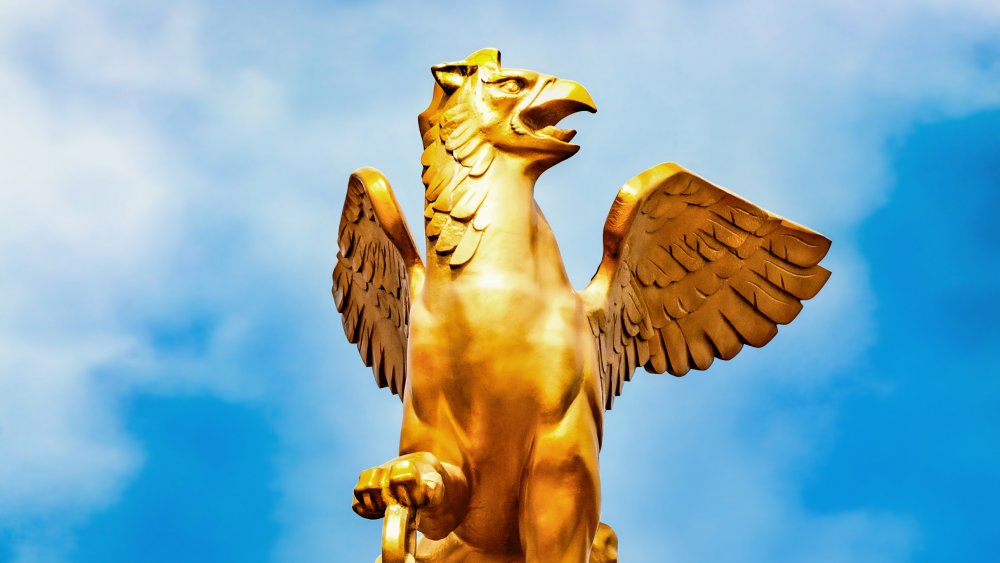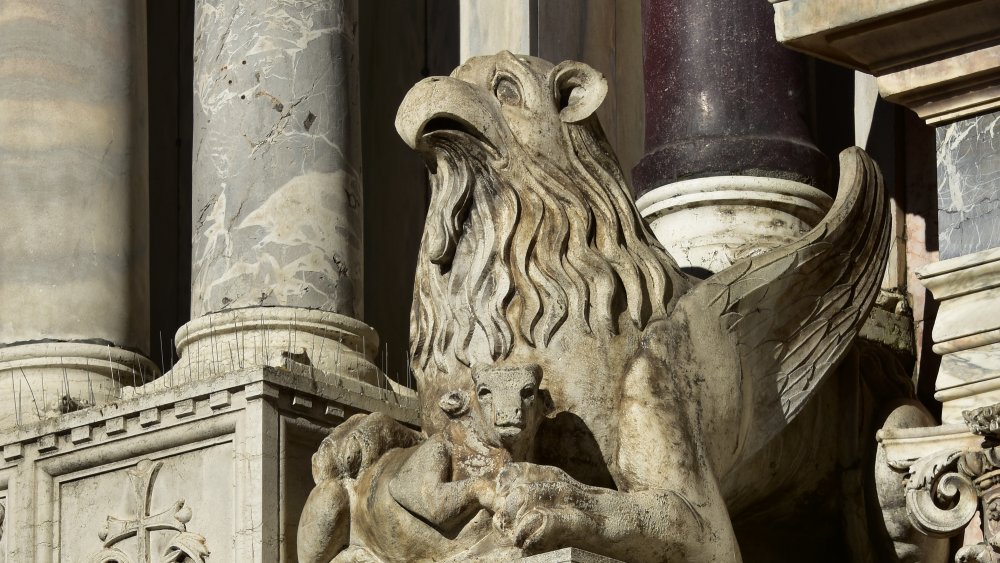The Legend Of The Griffin Explained
If you find yourself seeking a mythical beast with lion legs and an eagle's head — or some variation on that theme — what you are looking for is a griffin, a griffon, or a gryphon. The name is somewhat confusing — griffon is Old French, the other two come from Greek and Latin — but it all means the same thing, more or less.
Depictions of griffins date back as far as 2000 BCE. It spread through western Asia to Greece by about 1400 BCE. Like lots of mythical creatures, there's some discrepancy as to what exactly constitutes a griffin, but most legends describe a composite creature. Encyclopedia Britannica says that the basic structure of the beastie is that of a lion's body sporting a bird's head — usually, but not always, an eagle's. The lion portion may or may not be winged, at least in its first iterations.
Sometimes the griffin was depicted with a lion's body and rear legs, with an eagle's head, wings, and talons in the front. They're not unlike the hippogriff, another mythological creature — J.K. Rowling included a hippogriff, Buckbeak, in her Harry Potter saga. They have the body of a horse combined with characteristics of an eagle, says Harry Potter Fandom. As Ancient Origins reports, the ancient Assyrians' lamassu combined a man's head with an eagle's wings and the body of a lion or a bull.
Griffins are often seen as protective
Theoi relates the Greek myth that griffins (or grypes) guarded gold deposits in the mountains of the Scythia tribes of Northeastern Europe. Another race of mythic beasts, the one-eyed Arimaspians, regularly fought with the griffins over the treasures. In his epic Prometheus Bound, the Ancient Greek poet Aeschylus warned his readers to simply stay away from both groups.
Britannica tells us that by the Iron Age, the figure, whatever its particulars, often appeared in tomb furnishings, so it might have been associated with divinity in some way — but that's just an educated guess. Mythology says that griffins guard the entrance to paradise in Dante's Divine Comedy. Muslim poets such as Rumi use the griffin as a symbol of Islamic virtue. By medieval times, griffins had a firm and frequent place in heraldry, utilized as an expression of Christian divine power and protection.
So how did this crazy mashup spring to so many ancient people's imaginations? One theory is that bones of the dinosaur protoceratops inspired what became known as the griffin — it did feature a bird-like beak.

